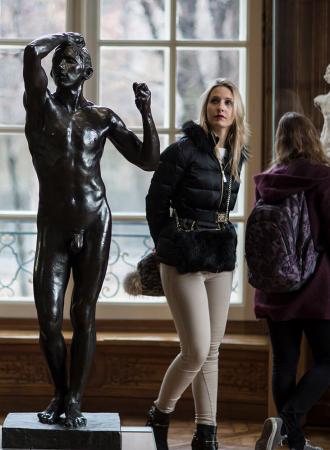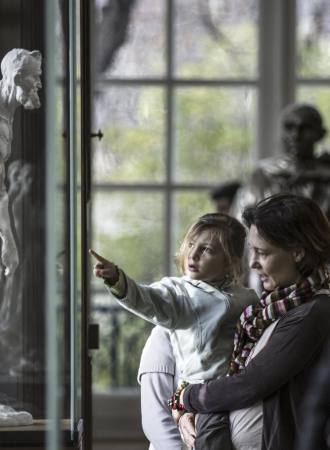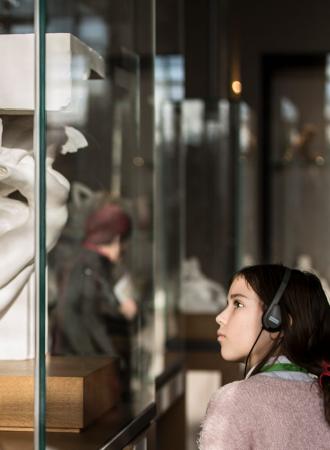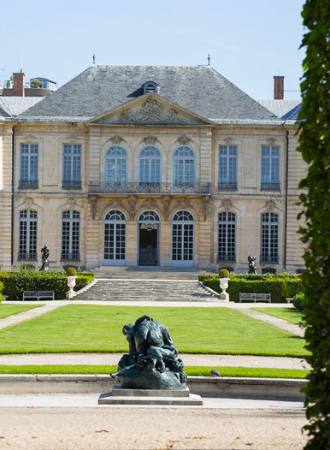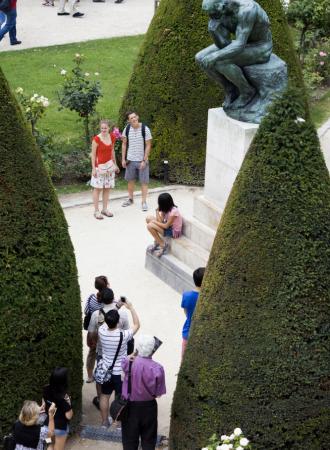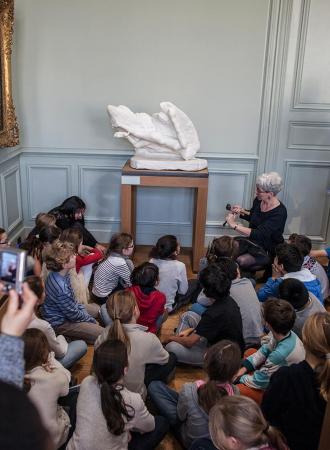Search the site
Bronze sand casting
Two processes are used to switch from plaster to bronze models: lost wax casting and sand casting, which was used in Rodin's time but is very rare today. In both cases, the molten bronze is poured into a mold around a core which is then removed. In the end, the bronze work is hollow, which lightens its weight and cost. Le Normand-Romain, Antoinette, Rodin et le bronze. Catalog des œuvres conservées au musée Rodin, Éditions du musée Rodin / Éditions de la Réunion des musées nationaux, Paris, 2007, 2 vols; p.63
"In its broad outline, sand casting is not very different from lost-wax casting. It is a little simpler, however, because there is only one mold, in sand, and no wax proof: this means that the artist does not have the possibility of retouching his work one last time, but that he can be assured a priori of a great fidelity to the original model. For Rodin, who put several hundred bronzes into circulation, this was obviously an advantage. The model, which can be in plaster or in a more resistant bronze if it is an unlimited edition (it is then called "chef-modèle"), is generally cut to facilitate the molding. The mold is made by packing sand around it. When the model is in plaster, it suffers from these operations: "If the model had been treated by sand casting, it would have been completely broken up," wrote Jean Bernard in a note dated December 9, 1977, about the casting of The Gates of Hell, "each piece assembled by Roman-style cuts, passed through shellac, which would have removed its original character of plaster. Moreover, each piece that had been subjected to the treading of the foundry clay and the cutting of the pieces would have been irreparably marked, not to say damaged, by these different operations. (With the lost wax) the model will not be altered in any way and, on the contrary, restored and strengthened, rendered in such a state that it can be exhibited." After the thickness print, the core is placed back inside this mold and the bronze cast directly. To take out the proof, the mold must be broken: it cannot be used again, but the sand can be reused. After the casting, and although the feeding network is less complex, the work of chiseling is more important than in the case of a lost wax because, the model having generally been cut, it is necessary to assemble the various parts. These cuts entailed risks of deformation and Rodin sought to avoid them: Leblanc-Barbedienne thus made him hope that it would not be necessary to make any for Les Bourgeois de Calais and Jean-René Carrière remembered having witnessed the casting "in one go" of the great Thinker, "a rare process but less rare than its success". Such castings, possible only in the case of not too complicated forms, were indeed a real feat of which the founders who were capable of it were proud."
